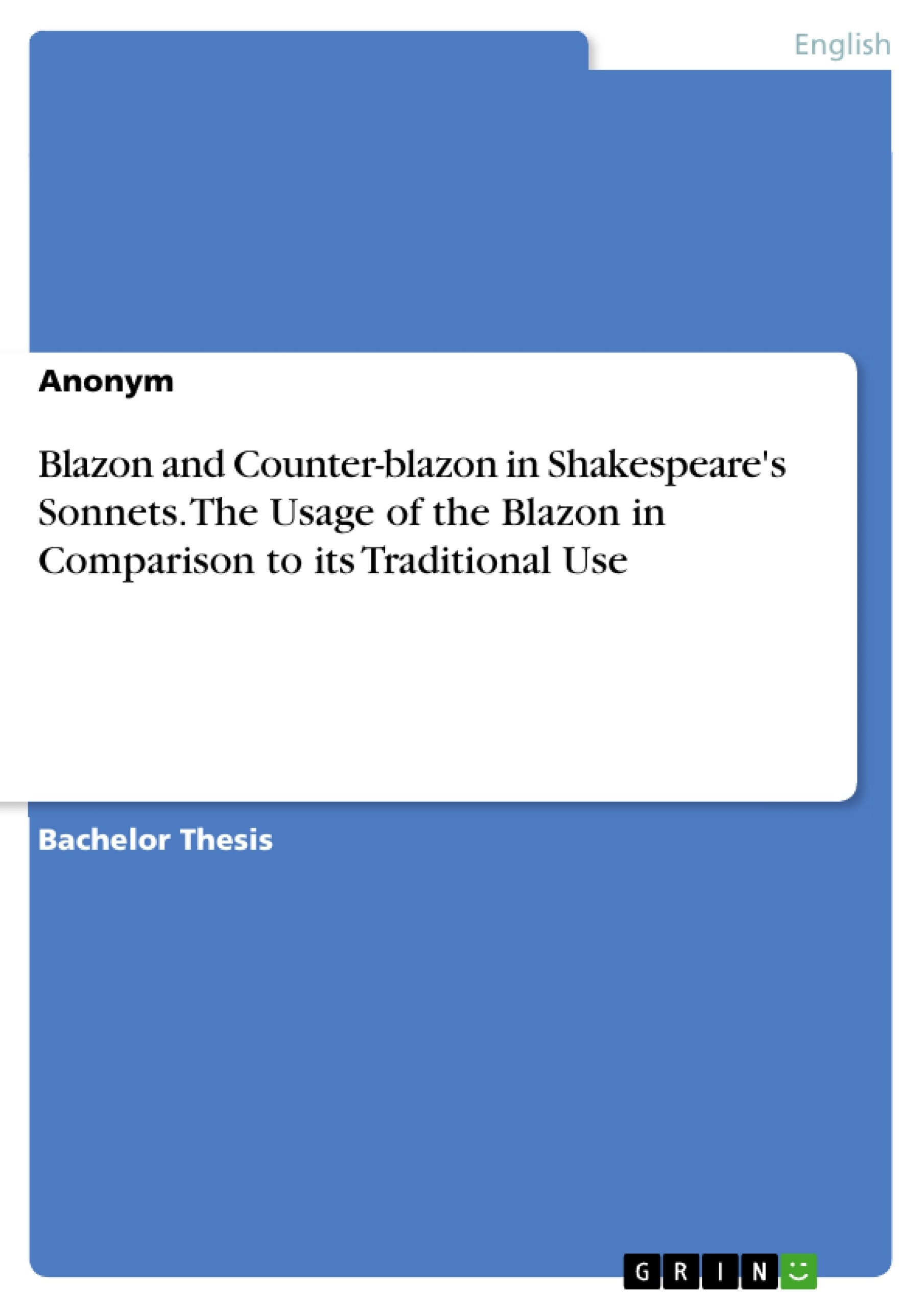In this thesis, the central question that will be focused on is: How does Shakespeare use the blazon in his sonnets in comparison to its traditional use? To answer that question, intertextual analyses will examine the topos of the blazon by focusing on Shakespeare’s representation of the Young Man and the Dark Woman in contrast to the traditional use of the blazon. Firstly, the terms ‘topos’ and ‘blazon’ will be explained to clarify the context. Also, the most ideal-typical poets and works will be mentioned to explicate their characteristics and the traditional use of the topos. Secondly, the focus will be on Shakespeare’s sonnets. In this chapter, both the dark woman and the young man will be presented and analysed in their representations in the poems. This thesis aims to answer the question of how the blazon and counter-blazon are represented in Shakespeare’s Sonnets. All texts that will be analysed can be found in the appendix.
Nowadays, when people think of poetry, one might automatically connect it to love. Shakespeare or Spenser might come to mind when thinking about authors or poets. Poetry and especially love poems have specific themes like beauty that reoccur and are present throughout time. Shakespeare’s sonnets contain a variety of poetical themes, such as time, beauty and love.
Beauty is a theme that was popular to assign to women in the Elizabethan Age. In this period, female body parts were described in a detailed and poetic way to emphasise the beauty of the described persona. The description was made using imagery and language that was full of emotions. This poetic technique was named ‘blazon’ and got popularised during the Renaissance by Petrarch’s influence. However, in Shakespeare’s Sonnets, the theme of beauty is dealt with differently.
Table of Contents
- 1. Introduction
- 2. The Topos of Blazon
- 2.1 Topos
- 2.2 Blazon vs Counter-blazon
- 2.3 Examples of the Blazon
- 2.3.1 Petrarch (14th century)
- 2.3.2 Sidney (1591)
- 2.3.3 Spenser (ca. 1582)
- 2.3.4 Daniel (1592)
- 2.4 Examples of the Counter-blazon
- 2.4.1 Marot (1535)
- 2.4.2 Skelton (ca. 1550)
- 3. Shakespeare's Sonnets
- 3.1 The Young Man
- 3.2 The Dark Woman
- 3.3 Sonnet 144
- 3.4 Comparison
- 3.5 Interpretation
- 4. Conclusion
Objectives and Key Themes
This thesis aims to explore the use of the blazon in Shakespeare's sonnets, examining how it differs from its traditional application. It seeks to answer the central question: How does Shakespeare utilize the blazon in his sonnets in comparison to its conventional use? Through intertextual analysis, the study will focus on Shakespeare's representation of the Young Man and the Dark Woman, contrasting these with the traditional use of the blazon. The thesis will delve into the concepts of "topos" and "blazon" and explore the characteristics and traditional uses of the topos through examples from notable poets and works.
- The blazon as a topos in Renaissance literature.
- Shakespeare's use of the blazon in his sonnets.
- Comparison of the blazon in Shakespeare's sonnets to its traditional use.
- The role of the Young Man and the Dark Woman in Shakespeare's sonnets.
- Analysis of the counter-blazon in Shakespeare's sonnets.
Chapter Summaries
The first chapter introduces the topic of the thesis and provides background information on the blazon and its historical context. Chapter two offers a detailed analysis of the topos of the blazon, exploring its origins, characteristics, and key examples from medieval and Renaissance literature.
Keywords
This thesis explores the topos of blazon in Renaissance literature, particularly its use in Shakespeare's sonnets. Key themes include the representation of beauty, the contrasting portrayals of the Young Man and the Dark Woman, and the evolution of the blazon from traditional forms. Other key concepts include intertextuality, courtly love, and the role of poetic imagery and language.
- Quote paper
- Anonym (Author), 2022, Blazon and Counter-blazon in Shakespeare's Sonnets. The Usage of the Blazon in Comparison to its Traditional Use, Munich, GRIN Verlag, https://www.grin.com/document/1302186




